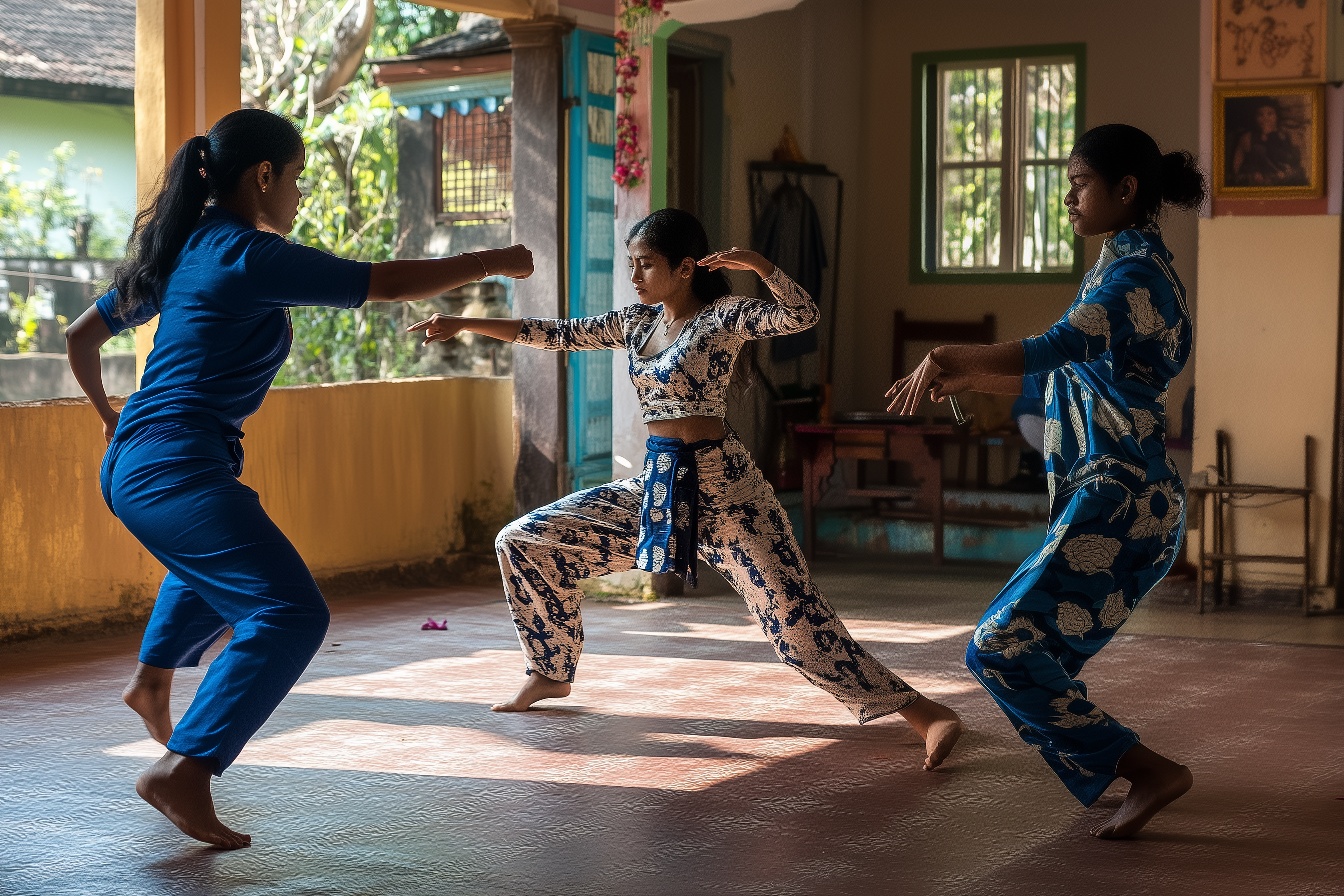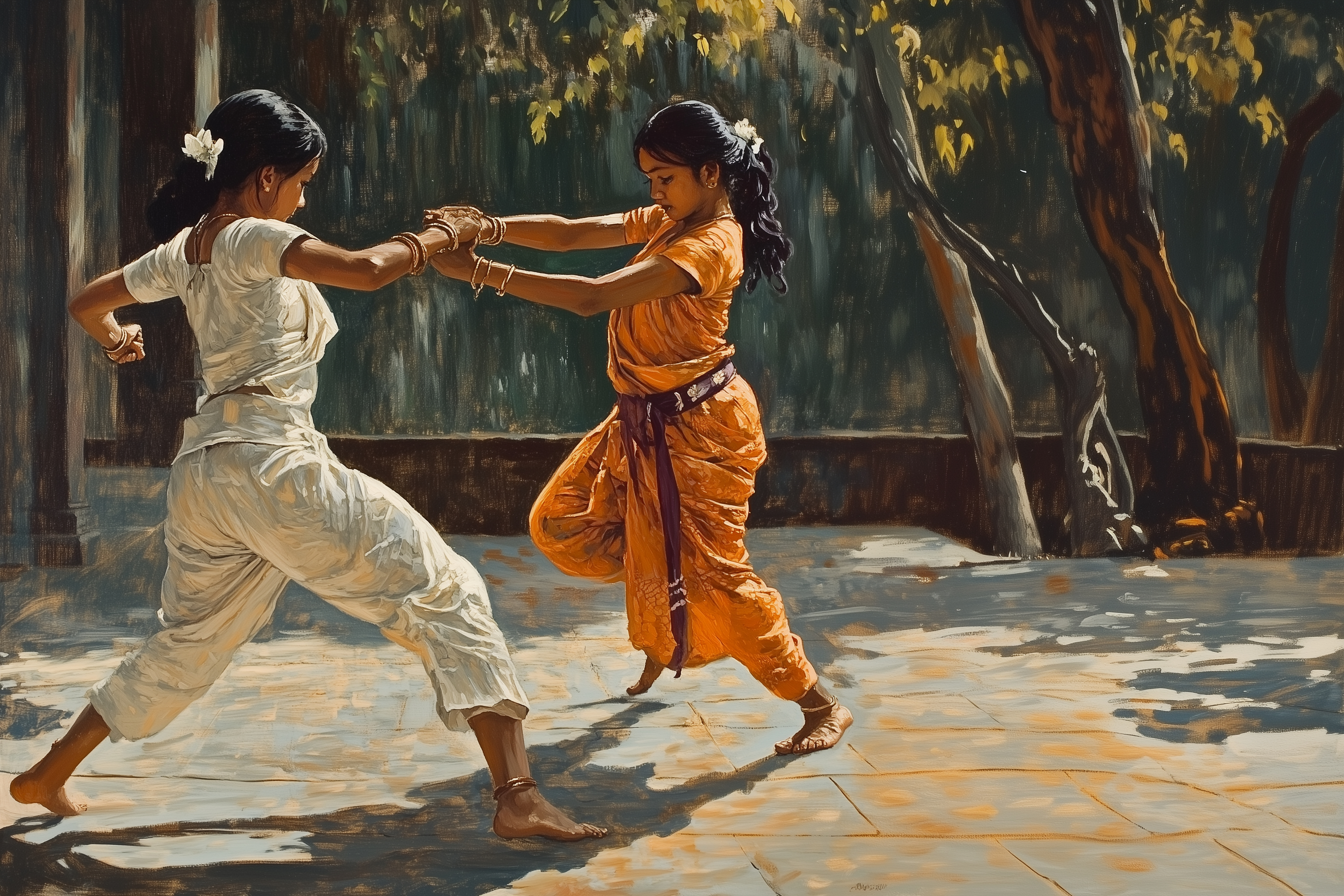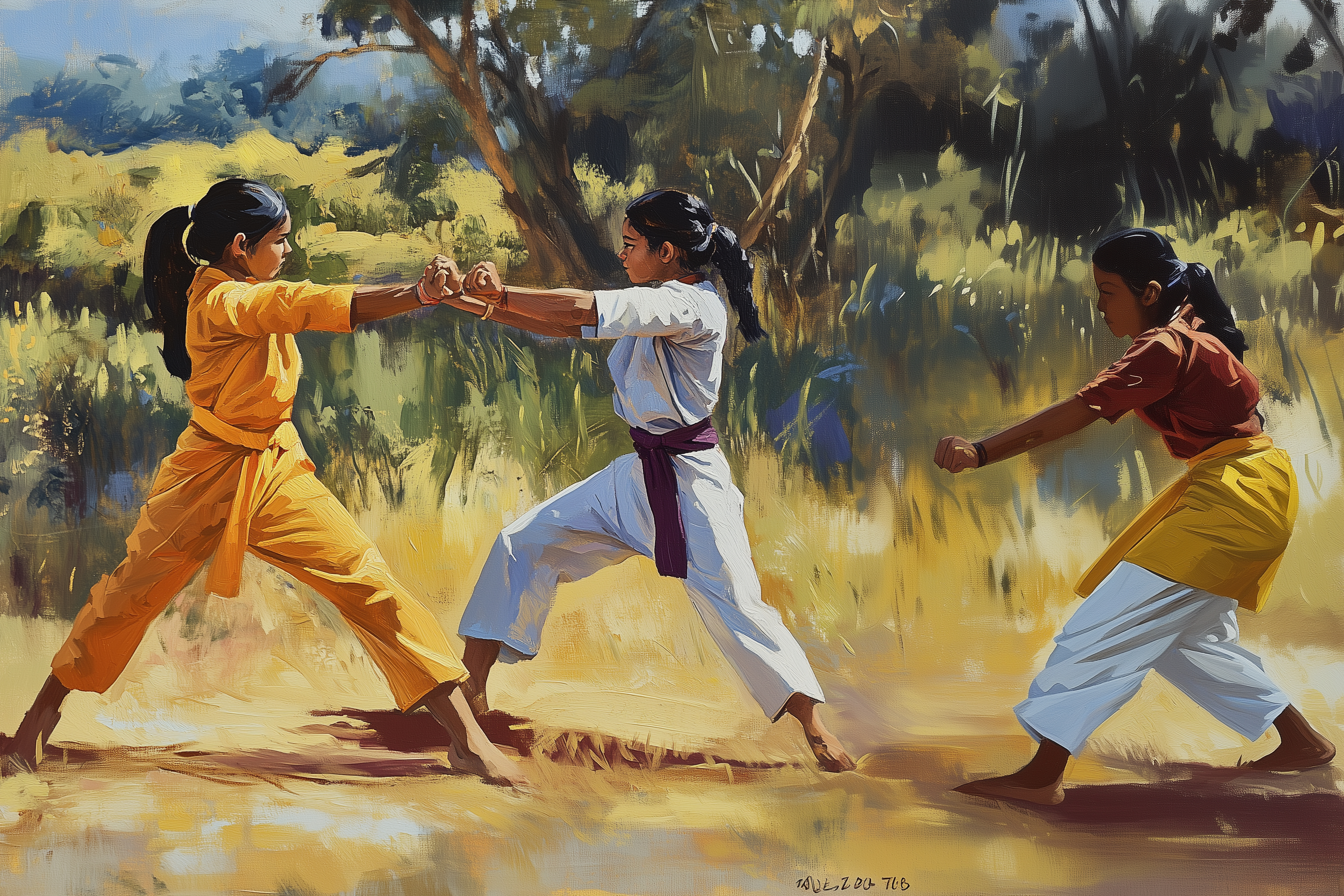

. . .
While Kalaripayattu is one of the oldest and most comprehensive martial arts in the world, originating from Kerala, India, and possessing a rich cultural heritage, there are arguments that it might not be the best choice for modern self-defense. While its historical significance and training methods are respected, here are a few reasons why Kalari may fall short when compared to more modern, practical self-defense systems:
Complex Movements and Techniques Kalaripayattu is known for its elaborate movements, which often require significant training and practice to master. Many of its techniques, especially those drawn from animal forms like the tiger (Puli Angam) or lion (Simha Angam), involve highly stylized movements that may not be easily applicable in a real-world self-defense scenario.

In a self-defense situation, simplicity and efficiency are key. A person needs to react quickly and effectively to neutralize a threat, but Kalari’s fluid, circular motions and acrobatic movements can make it difficult for a practitioner to perform under stress, especially if they have not mastered the art over years of practice. The intricacy of Kalaripayattu’s techniques might hinder someone when they need to defend themselves immediately and with minimal effort.
Long Learning Curve
One of the main reasons Kalaripayattu may not be ideal for self-defense is the steep learning curve. It takes several years of dedicated practice to become proficient in Kalaripayattu, as it is not just a martial art but a complete system that includes physical conditioning, weapons training, and mental discipline.

For those seeking immediate or short-term self-defense skills, modern systems like Krav Maga or Brazilian Jiu-Jitsu (BJJ) may offer more practical solutions. These modern systems focus on quick and effective techniques that can be learned in a relatively short time and are designed specifically for real-world scenarios. In contrast, Kalaripayattu requires extensive physical conditioning, flexibility, and mastery of complex forms, which may not be practical for someone looking for rapid self-defense capabilities.
Focus on Traditional Weapons
Kalaripayattu places a strong emphasis on the use of traditional weapons like the urumi (flexible sword), katara (dagger), and staffs. While weapons training is an important aspect of martial arts, it’s less relevant for modern self-defense. In a real-world self-defense scenario, it’s unlikely that one would have access to these traditional weapons. Furthermore, training with such weapons does not necessarily translate to handling modern-day threats like firearms or knives.

In contrast, modern self-defense systems like Krav Maga or Systema focus on defending against threats that one is more likely to encounter in today’s world, such as knives, guns, or multiple attackers. These systems teach practical techniques to disarm attackers and neutralize immediate threats without relying on specific tools or weapons.
Inapplicability in Urban Environments
Kalari Payattu originated as a battlefield art and was traditionally practiced in open, rural environments. Many of the movements are designed for wide spaces, where practitioners have room to perform complex footwork and sweeping strikes. However, in modern self-defense situations—especially in urban environments like crowded streets or small enclosed areas—there is little room for such movements. Defending oneself in a cramped space like an elevator or a narrow alley requires different tactics than what Kalaripayattu typically trains for.

Modern self-defense systems are designed to be adaptable to any environment, whether it’s a street, an office, or public transportation. The close-combat techniques taught in arts like Brazilian Jiu-Jitsu, Muay Thai, or Krav Maga are more relevant in these environments, as they focus on short-range strikes, grappling, and escape techniques that can be performed in confined spaces.
Lack of Emphasis on Psychological Conditioning
While Kalaripayattu is a highly physical art form, its emphasis on psychological conditioning for real-world self-defense is less pronounced compared to modern systems. In self-defense, being mentally prepared and knowing how to handle stress, fear, and adrenaline is crucial. Systems like Krav Maga train individuals in high-stress environments, preparing them to react effectively under pressure. These systems also teach situational awareness, de-escalation, and escape strategies, which are essential components of modern self-defense but less emphasized in Kalari.

Conclusion
While Kalaripayattu is a beautiful and culturally rich martial art that offers many benefits in terms of physical fitness, discipline, and mental focus, it may not be the best choice for someone looking for a quick and practical self-defense system.

Its complex movements, traditional weapon focus, steep learning curve, and lack of modern urban applicability can limit its effectiveness in real-world self-defense situations. For immediate and practical self-defense skills, modern systems like Krav Maga, BJJ, or Muay Thai are often more suitable choices.
. . .
